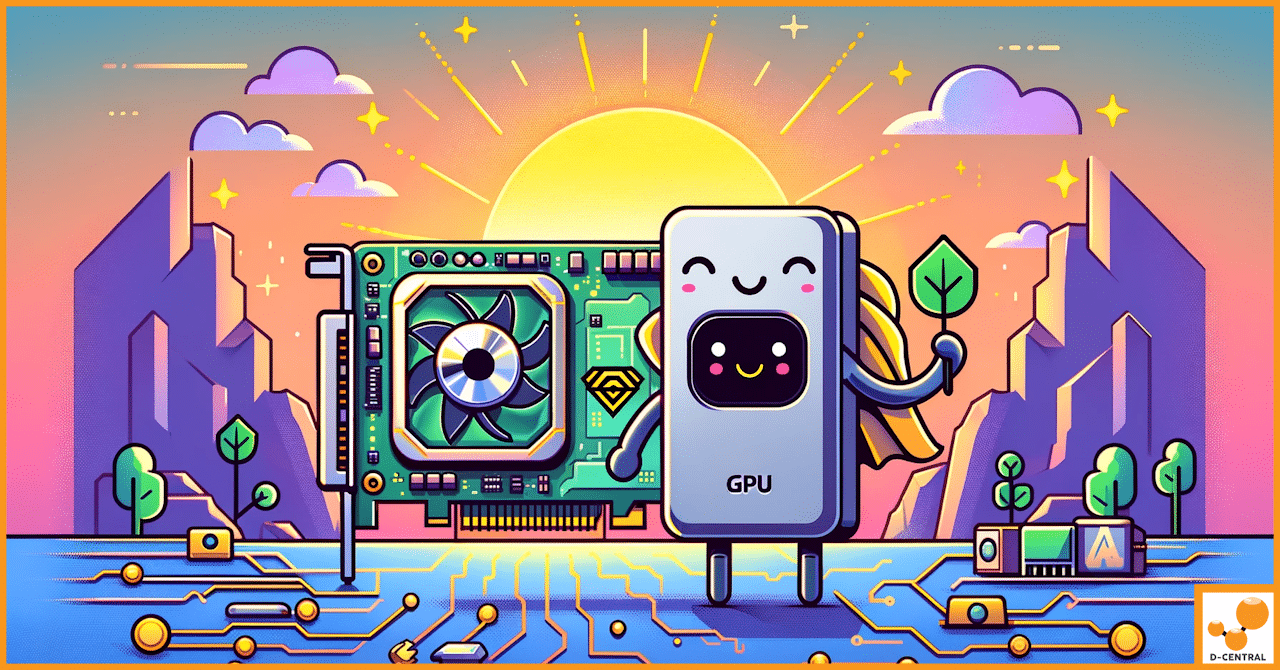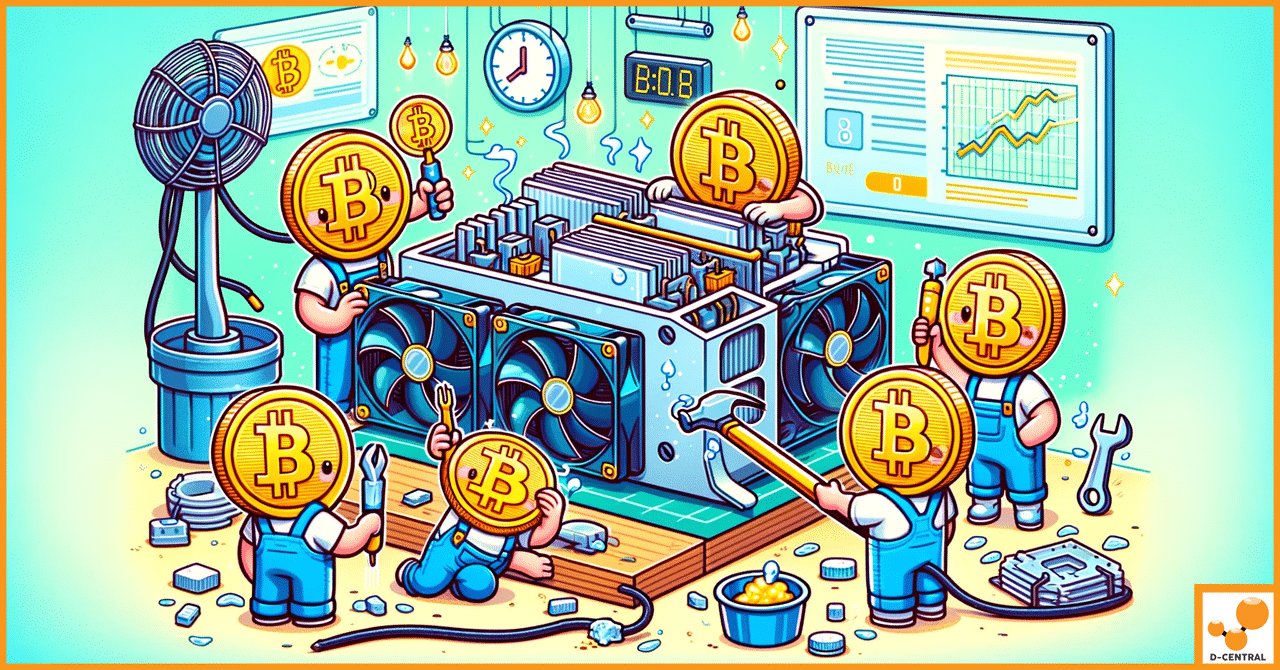
Guide to Starting a Bitcoin Mining Business
In the rapidly evolving digital age, Bitcoin mining has emerged as a cornerstone of the cryptocurrency revolution. This process is
4479 Desserte Nord Autoroute 440, Laval, QC H7P 6E2

In the ever-evolving landscape of technology, the role of Graphics Processing Units (GPUs) has transcended beyond their original design for rendering images and videos in gaming. Today, GPUs stand at the forefront of high-performance computing, driving innovations in diverse fields ranging from artificial intelligence (AI) to Bitcoin mining. This transformative journey of GPU computing, from a niche component in gaming consoles to a cornerstone in some of the most advanced computational tasks, marks a significant leap in technological advancement.
The significance of GPUs in the realm of AI is particularly noteworthy. AI and machine learning algorithms require immense computational power to process large datasets and perform complex calculations at high speeds. GPUs, with their parallel processing capabilities, have become indispensable in accelerating these tasks, making them more efficient and feasible. From powering deep learning models to enabling real-time data processing, GPUs have become the backbone of AI operations, pushing the boundaries of what machines can learn and achieve.
Parallel to the rise of AI, the world of cryptocurrency, particularly Bitcoin mining, has also seen a paradigm shift with the involvement of GPUs. Initially, Bitcoin mining was a CPU-centric task, but as the complexity and competition in the mining process increased, miners turned to GPUs for their superior processing power. Although the Bitcoin mining landscape has evolved with the introduction of more specialized hardware like ASICs (Application-Specific Integrated Circuits), GPUs continue to play a crucial role in mining other cryptocurrencies and remain a key component in the broader discussion of blockchain technology and its applications.
As we delve into the intricate world of GPU computing, this article aims to explore the latest trends in GPU technology, its expanding role in AI applications, and its enduring impact on the field of Bitcoin mining. We will navigate through the technological advancements, market dynamics, and the future prospects of GPUs, shedding light on how this technology is not just shaping our current digital era but also paving the way for future innovations.
The journey of GPU computing is a remarkable tale of adaptation and innovation, reflecting the dynamic nature of technology and its ability to find new applications beyond its original intent.
Historical Perspective: From Gaming to High-Performance Computing
Initially designed to accelerate image processing in video games, GPUs were specialized hardware capable of rendering complex graphics efficiently. This singular focus began to shift as developers and researchers recognized the potential of GPUs in parallel processing tasks. Unlike Central Processing Units (CPUs), which are designed to handle a few complex tasks sequentially, GPUs excel in managing thousands of simpler, concurrent tasks. This ability made them particularly suited for scientific computing and simulations, where large datasets and repetitive calculations are common.
The adoption of GPU computing in high-performance tasks was further propelled by the development of programming frameworks like CUDA (Compute Unified Device Architecture) by Nvidia. CUDA allowed developers to use C/C++ programming languages to harness the power of GPUs, opening up a new realm of possibilities in computational research, 3D rendering, and eventually, machine learning and AI.
The Transition from CPU to GPU in Bitcoin Mining
In the early days of Bitcoin, mining was primarily a CPU-based activity. Miners used their personal computers to solve complex mathematical puzzles to validate transactions and add new blocks to the blockchain, earning Bitcoin as a reward. However, as the network grew, so did the difficulty of these puzzles, rendering CPU mining inefficient and unprofitable.
The quest for more efficient mining methods led to the adoption of GPUs. With their superior ability to perform parallel computations, GPUs drastically increased the hashing power, making mining more efficient and lucrative. This transition marked a significant shift in the Bitcoin mining landscape, leading to the creation of mining pools and specialized mining rigs composed of multiple GPUs.
Current State of GPU Technology and Market Trends
Today, the GPU market is characterized by rapid growth and innovation, driven by increasing demands from diverse sectors. The rise of AI and deep learning has particularly spurred this growth, as GPUs are integral in training complex neural networks. Companies like Nvidia and AMD are continuously pushing the boundaries of GPU capabilities, focusing on higher processing power, energy efficiency, and AI-specific enhancements.
The market for GPUs has also expanded beyond traditional computing and gaming. Industries such as automotive, healthcare, and finance are leveraging GPU-powered AI for tasks ranging from autonomous vehicle technology to real-time fraud detection. This broadening application scope has led to a surge in demand, influencing market trends and pricing.
Moreover, the GPU market is also influenced by the fluctuating dynamics of cryptocurrency mining. The profitability of mining activities can significantly impact GPU demand and pricing, as seen in various market cycles over the past decade.
In summary, the evolution of GPU computing from a gaming-centric hardware to a pivotal component in high-performance computing and AI reflects a remarkable trajectory of technological adaptation and innovation. As we continue to push the limits of what’s possible with technology, GPUs are set to play an even more critical role in shaping the future of computing.
The integration of Graphics Processing Units (GPUs) in the field of Artificial Intelligence (AI) has been a game-changer, significantly enhancing the capabilities and efficiency of AI systems. This section delves into the multifaceted role of GPUs in AI, highlighting their impact on AI training and inference, exploring case studies of major companies leveraging this technology, and examining how AI advancements are influencing GPU development.
The Role of GPUs in AI Training and Inference
Case Studies: How Major Companies Are Leveraging GPUs for AI
The Impact of AI Advancements on GPU Development
The growing demands of AI applications have significantly influenced GPU development. Recognizing the need for more specialized hardware, companies like NVIDIA and AMD have been developing GPUs specifically tailored for AI tasks. These AI-optimized GPUs feature enhancements like increased memory bandwidth and specialized cores for deep learning operations.
Furthermore, the rise of AI has spurred innovation in GPU architecture and software. For instance, the development of AI-specific programming frameworks and libraries, such as TensorFlow and PyTorch, has made it easier for developers to leverage GPU power for AI applications.
GPUs have become an indispensable tool in the AI landscape, driving advancements in both AI capabilities and GPU technology. As AI continues to evolve and find new applications, the synergy between AI and GPU computing is poised to unlock even greater possibilities and efficiencies.
In the rapidly evolving world of GPU computing, GPUtopia emerges as a groundbreaking platform, revolutionizing how GPU resources are accessed and utilized. This section explores the innovative marketplace model of GPUtopia, its role in democratizing GPU access, and the pioneering integration of Bitcoin payments through the Lightning Network.
Introduction to GPUtopia and Its Marketplace Model
GPUtopia is a novel platform that operates on a marketplace model, fundamentally changing the landscape of GPU computing. It serves as a decentralized network where individuals and organizations can rent out their unused GPU power or access additional GPU resources as needed. This model is akin to an ‘Airbnb for GPUs,’ where GPU owners can monetize their idle resources, and users requiring high-performance computing can access these resources at a fraction of the cost of traditional cloud services or hardware investments.
How GPUtopia is Democratizing Access to GPU Resources
The Integration of Bitcoin Payments through the Lightning Network
A distinctive feature of GPUtopia is its integration of Bitcoin payments, facilitated by the Lightning Network. This integration represents a significant stride in combining the realms of cryptocurrency and high-performance computing.
In summary, GPUtopia represents a transformative approach to GPU utilization, democratizing access to high-performance computing resources while innovatively integrating Bitcoin payments. This platform not only optimizes the use of existing GPU resources but also paves the way for a more inclusive and efficient computing future.
In the realm of Bitcoin mining, the technological landscape has evolved to a point where Graphics Processing Units (GPUs) are no longer a viable option. Today, the process is dominated entirely by Application-Specific Integrated Circuits (ASICs), which are far more efficient for the specific task of Bitcoin mining. This section will explore the transition to ASIC mining, the current irrelevance of GPUs in Bitcoin mining, and D-Central’s approach to utilizing GPUs in more impactful ways.
The Complete Transition to ASIC Mining in Bitcoin
D-Central’s Stance on GPU Use in Cryptocurrency Mining
The era of GPU mining for Bitcoin is conclusively over, with ASICs taking the definitive lead due to their specialized efficiency. D-Central’s approach redirects the focus from GPU mining of altcoins to more beneficial and forward-thinking applications, such as AI computing, while also supporting the Bitcoin network through innovative ASIC solutions for home miners. This strategy not only aligns with the technological realities of mining but also with a vision for a more impactful and sustainable use of computing resource.
The landscape of cryptocurrency mining is undergoing a significant transformation, with many miners pivoting from traditional crypto mining to leveraging their GPU farms for AI applications. This shift represents a strategic realignment of resources towards more sustainable and potentially more profitable ventures. This section explores the transition of GPU farms from crypto mining to AI applications, the challenges and opportunities inherent in this shift, and real-world examples of miners making this transition.
The Transition of GPU Farms from Crypto Mining to AI Applications
Challenges and Opportunities in This Shift
Real-World Examples of Miners Making This Transition
The pivot from crypto mining to AI workloads represents a strategic and forward-thinking approach for GPU miners. While it involves navigating through certain challenges, the opportunities it presents in the thriving field of AI are substantial. This transition not only offers a more stable and potentially profitable avenue but also aligns with broader technological trends and societal benefits.
The exploration of GPU computing, its role in AI, and the relationship with Bitcoin mining reveals a dynamic and rapidly evolving technological landscape. This article has delved into various facets of this interplay, offering insights into current trends and future possibilities. Here, we summarize the key points discussed and reflect on the broader implications for the tech industry, concluding with thoughts on the evolving landscape.
The convergence of GPU computing, AI, and Bitcoin mining has broad implications for the tech industry. It signifies a move towards more versatile, efficient, and purpose-driven computing. This convergence is driving innovation, fostering new business models, and encouraging sustainable practices. It also highlights the importance of adaptability and forward-thinking in a rapidly changing technological environment.
As we look to the future, the landscape of GPU computing, AI, and Bitcoin mining is poised for continued evolution. The increasing demand for AI capabilities will likely spur further advancements in GPU technology. The integration of Bitcoin and blockchain technology in various domains, including high-performance computing, opens new avenues for innovation and efficiency. Moreover, the focus on sustainability and energy efficiency will continue to shape decisions in hardware development and application choices.
The interplay between GPU computing, AI, and Bitcoin mining is a testament to the ever-changing nature of technology and its profound impact on the world. As these fields continue to evolve and intersect, they will undoubtedly present new challenges and opportunities, driving the tech industry towards a more innovative, efficient, and sustainable future.
What is the evolving role of Graphics Processing Units (GPUs)?
Originally designed for rendering images and videos in gaming, GPUs have evolved and are now pivotal in high-performance computing, particularly in the fields of artificial intelligence (AI) and cryptocurrency mining.
What is the significance of GPUs in the realm of AI?
AI and machine learning algorithms require immense computational power to process large datasets and perform complex calculations at high speeds. Graphical Processing Units, with their parallel processing capabilities, have become indispensable in accelerating these tasks, streamlining them for efficiency and feasibility.
Have GPUs maintained dominance in the world of cryptocurrency mining?
No, while initially GPUs played a crucial role in Bitcoin mining, the landscape has evolved with the introduction of more specialized hardware like Application-Specific Integrated Circuits (ASICs). ASICs, due to their enhanced performance abilities for cryptocurrency mining, have rendered GPUs less effective for this purpose.
What is GPUtopia?
GPUtopia is a unique platform that functions on a marketplace model, operating as a decentralized network where individuals and organizations can rent out their unused GPU power or access additional GPU resources as needed.
What role do GPUs play in AI training and Inference?
In AI training, GPUs are instrumental in processing vast amounts of data and performing complex mathematical computations. Their ability to manage these tasks simultaneously greatly reduces the time required to train AI models. When it comes to AI inference (making predictions or decisions based on new data), GPUs facilitate faster and more efficient inference, crucial in real-time applications.
Has Bitcoin mining completely moved away from GPUs?
Yes, the process of Bitcoin mining is now dominated entirely by ASICs, which are far more efficient and effective for the specific task of Bitcoin mining. While a few cryptocurrencies can still be mined using GPUs, Bitcoin mining has completely moved to ASICs.
DISCLAIMER: D-Central Technologies and its associated content, including this blog, do not serve as financial advisors or official investment advisors. The insights and opinions shared here or by any guests featured in our content are provided purely for informational and educational purposes. Such communications should not be interpreted as financial, investment, legal, tax, or any form of specific advice. We are committed to advancing the knowledge and understanding of Bitcoin and its potential impact on society. However, we urge our community to proceed with caution and informed judgment in all related endeavors.
Related Posts

In the rapidly evolving digital age, Bitcoin mining has emerged as a cornerstone of the cryptocurrency revolution. This process is

In the dynamic world of cryptocurrency mining, the Antminer S17+ has emerged as a cornerstone of efficiency and power. Manufactured

Antminer safety is a crucial consideration for anyone involved in cryptocurrency mining. Antminer machines are powerful tools that generate heat,